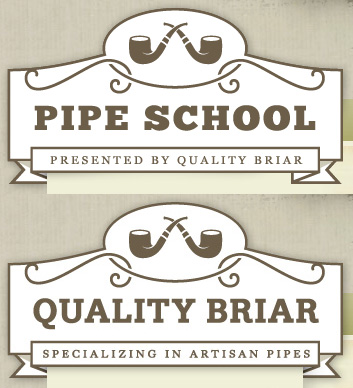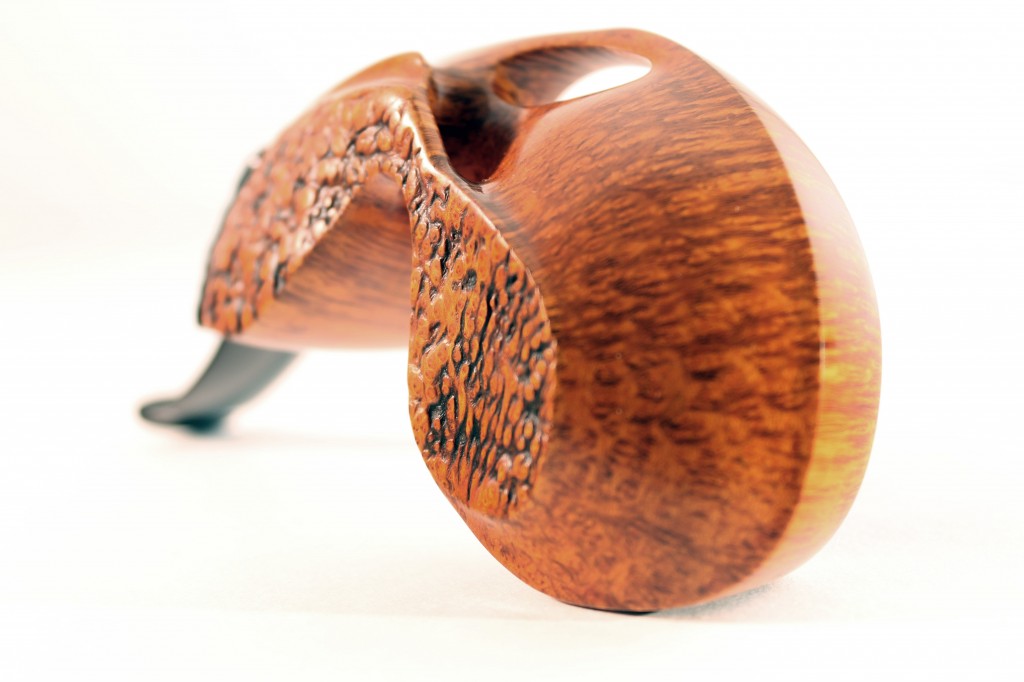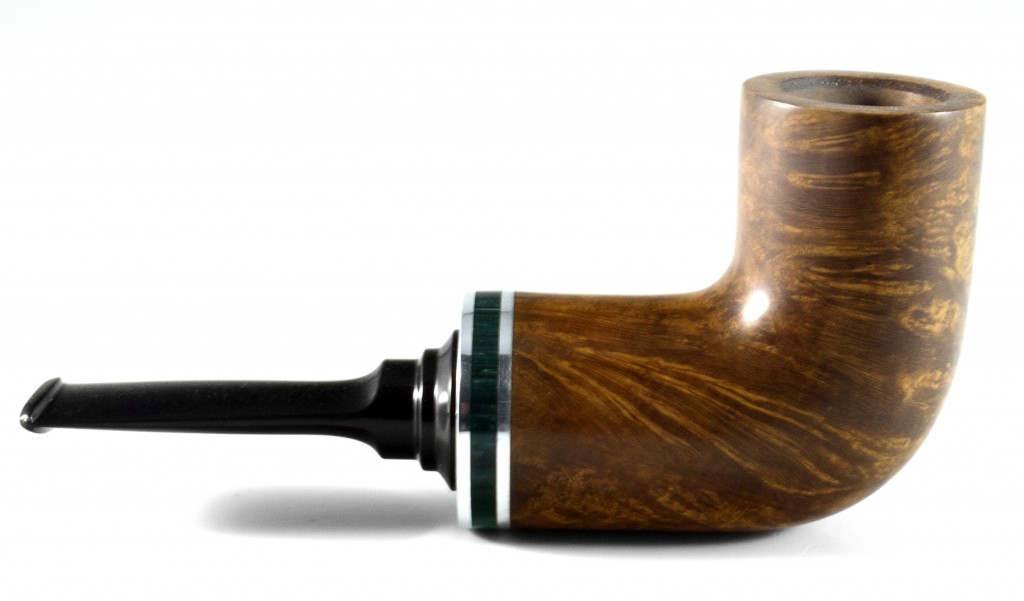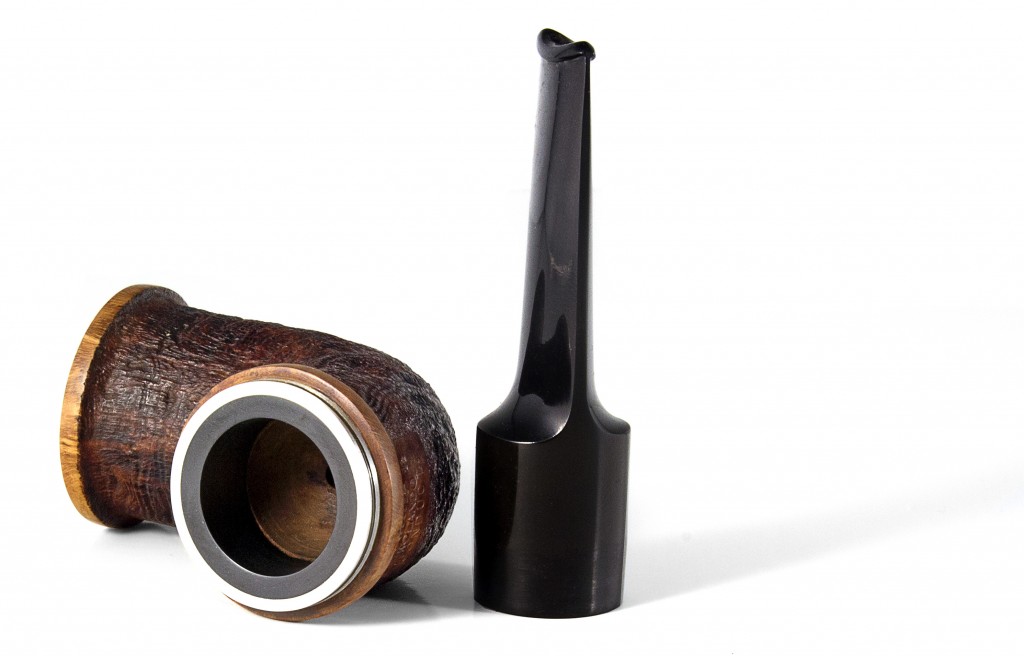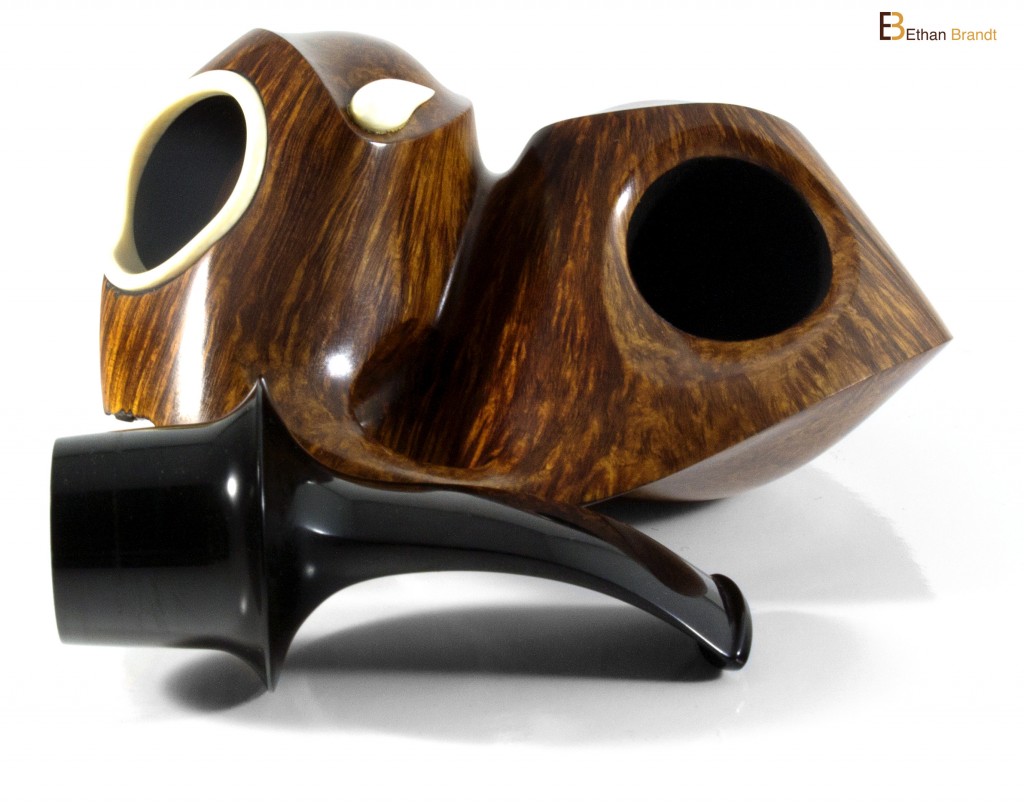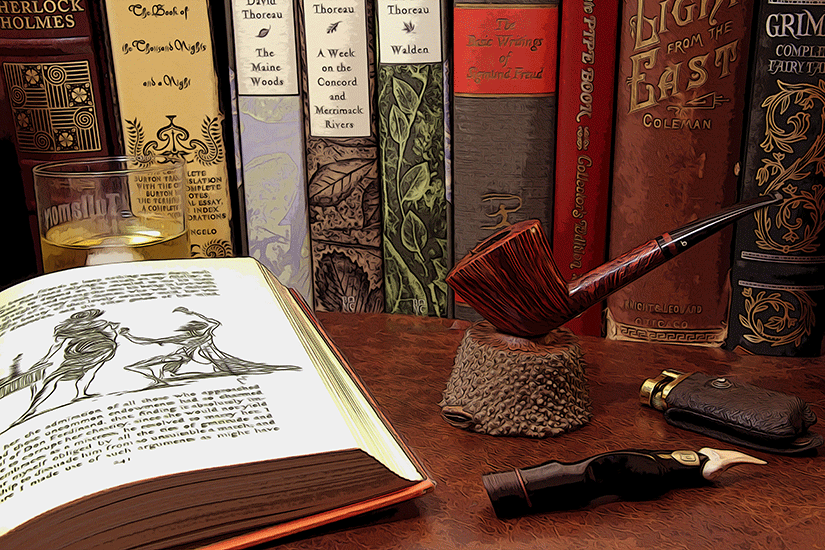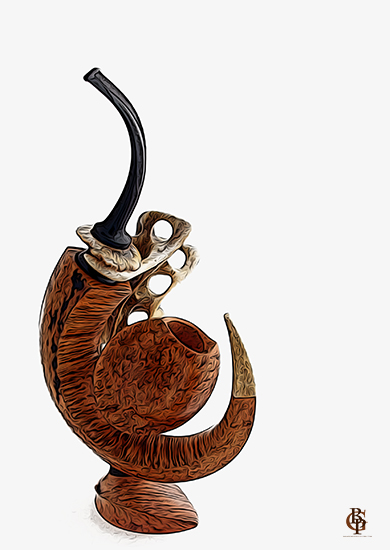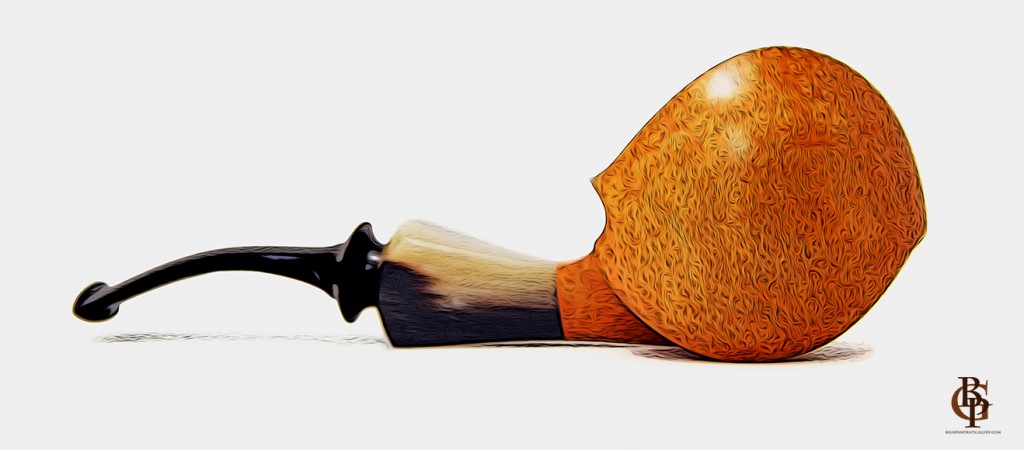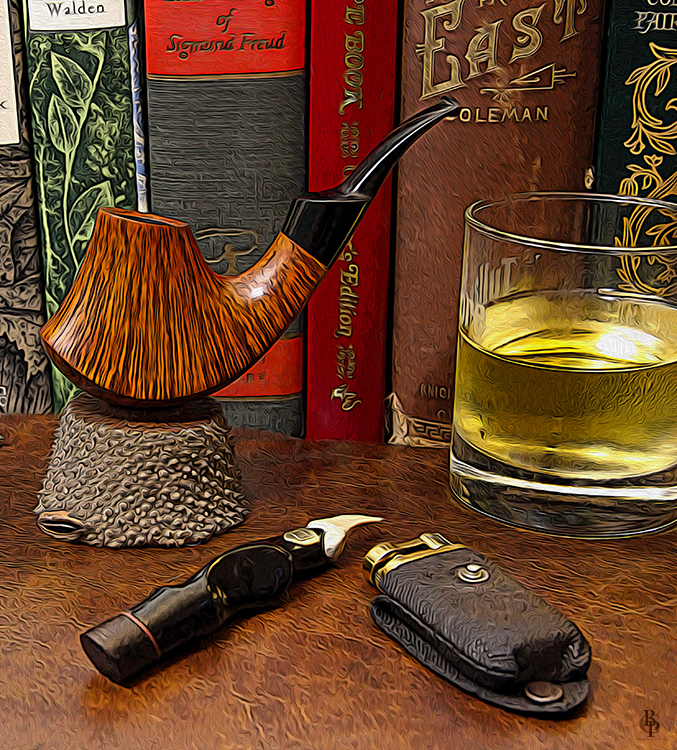It’s everywhere now, though it started off as a rarity: reverse calabashes.
I remember seeing my first reverse calabash: a bee by Michail Revyagin, one of the forerunners of the design. It was bizarre in appearance, but somehow entrancing at the same time. Then I read the description and saw a term that I hadn’t seen before – reverse calabash. What the heck is that?
Well, I knew what a calabash was, aside from the shape. Strictly speaking, a calabash is a vine which produces a remarkable fruit. This can be harvested young and eaten, or it can be aged and dried and used as a utensil or even a pipe.
When turned into a pipe, it is hollowed out and fitted with a bowl insert, typically meerschaum. What makes the calabash so remarkable is the empty space between the bowl and the stem. There is a large, hollow space where the smoke travels before passing through the stem. This space is called an expansion chamber and allows the smoke to cool, an effect that many believe enhances the flavor and experience of the smoke.
So, that’s a calabash. What’s a reverse calabash? I’m glad you asked!
It takes the principle of the calabash – ie. Having a built in expansion chamber – and simply moves the chamber towards the back of the pipe, immediately in front of the bit and stem. Thus, the smoke is still cooled without the restriction of designing a pipe fitted with a removable bowl. As Rolando Negoita says on his website, “This is the new generation of pipes… I have engineered these pipes so that the smoke from the tobacco chamber will pass through the cooling chamber in the shank before being delivered to the stem. In addition to cooling, this chamber will act to decant and filter the smoke as well.”
Rick Newcombe is a popular figure in the world of pipe-writings. One of his claims-to-fame is his contention that widening up the air-flow will increase the enjoyment of one’s smoke. Rick encourages opening it a couple of millimeters; a reverse calabash design takes that to much greater magnitudes.
Now that you know what it is, let’s dig a little deeper into why exactly this style has exploded in popularity. And it has. Over two years ago, a well-known blogger predicted that this design would spark great interest in the pipe world. I cannot describe how right he was.
It used to be that only a few people, such as Rolando Negoita, Michail Revyagin, and Tom Eltang used this technique. Now, however, it’s getting more and more common. To prove this, Radice recently introduced a billiard that features a reverse calabash system. As far as I know, this is the first company with such a large annual production (around 1,200 pipes) to try their hand at a reverse calabash in such numbers.
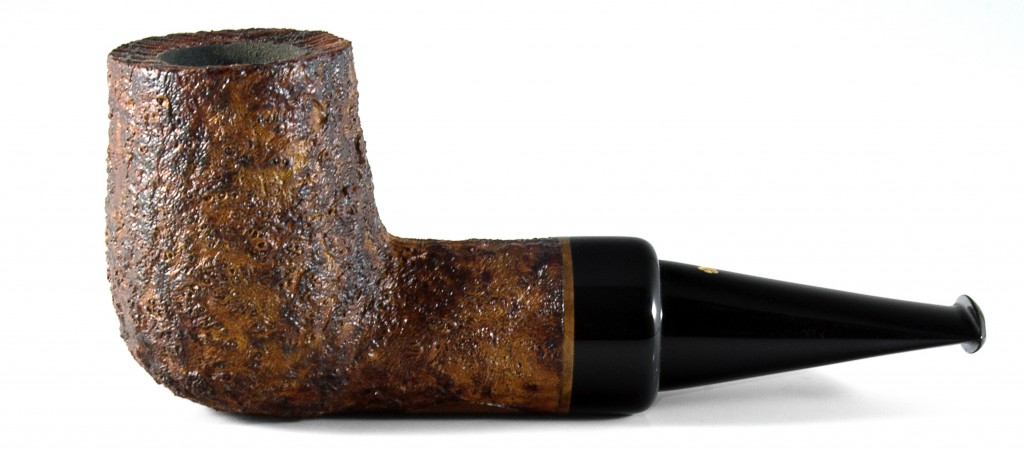 In terms of why they’re growing in popularity, a reverse calabash allows for more variety in terms of aesthetics than does a typical calabash. You can tell this simply by looking at the great conglomeration of pipes pictured in this piece. With that freedom that it allows, however, is one difficulty that sometimes proves too much for carvers. In order to put the expansion chamber in the shank, you need a fatter shank than most pipes. To account for this, most artisans avoid the shapes that require a skinny shank, like a Canadian or a Prince. But difficulty breeds invention. Revyagin, for example, created a brand new shape for with the Bee calabash. Negoita and Eltang went with a shape that looks more like a piece of plumbing, but they make it beautiful. The similarity in their design makes sense, as the two are good friends.
In terms of why they’re growing in popularity, a reverse calabash allows for more variety in terms of aesthetics than does a typical calabash. You can tell this simply by looking at the great conglomeration of pipes pictured in this piece. With that freedom that it allows, however, is one difficulty that sometimes proves too much for carvers. In order to put the expansion chamber in the shank, you need a fatter shank than most pipes. To account for this, most artisans avoid the shapes that require a skinny shank, like a Canadian or a Prince. But difficulty breeds invention. Revyagin, for example, created a brand new shape for with the Bee calabash. Negoita and Eltang went with a shape that looks more like a piece of plumbing, but they make it beautiful. The similarity in their design makes sense, as the two are good friends.
Many collectors have flocked to the shape because it delivers the same, high-quality smoke as a true calabash, without the visual restrictions. Let me tell you from first-hand experience, a reverse calabash gives a truly incredible experience, whether it is the bee from Revyagin or the Conducta by Negoita. I have found that the design works well with every type of tobacco, but it is particularly effective with blends that typically burn hot or wet, as the expansion chamber mitigates these effects. For example, straight Virginia blends and Burleys. A reverse calabash helps to emphasize the sweetness of a given blend.
Personally, I see little to no downside to this design. Sure, there are aesthetic difficulties to get around and some shapes will never work with the reverse calabash, without looking bloated. Despite this, I would not be surprised if we still have only seen the tip of the iceberg with this design. I, for one, will be continuing my appreciation of this design and hope to see more and more artisans applying this technique.
If you want to see more beautiful examples of the reverse calabash, check out this story’s incarnation over at www.thebriarportraitgallery.com
